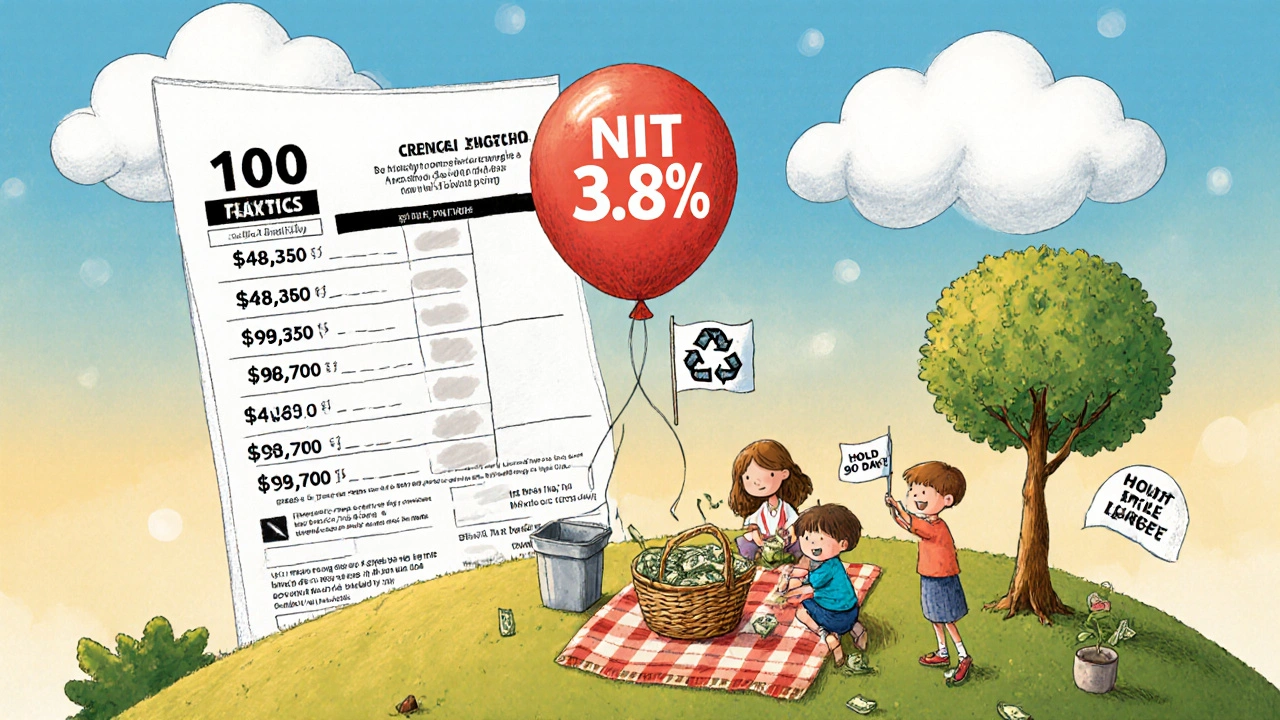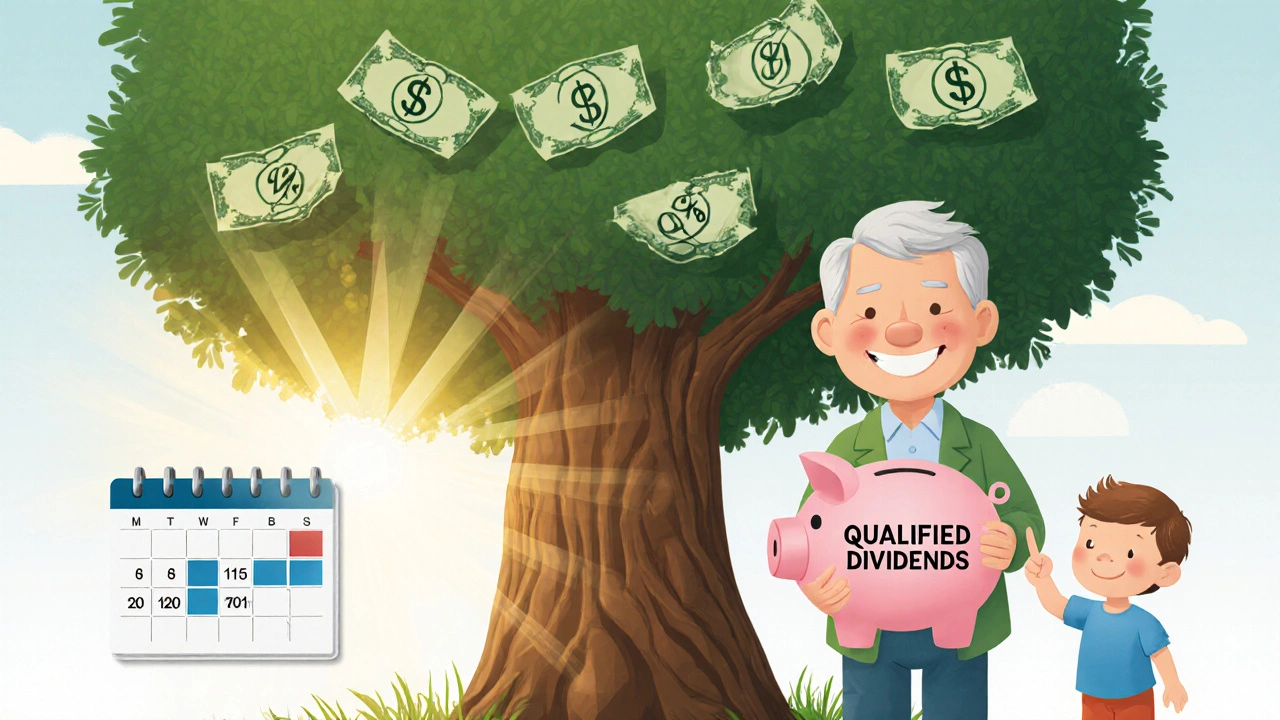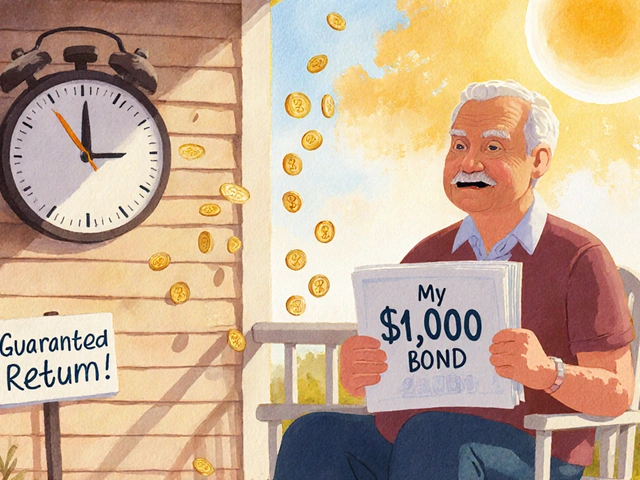Qualified Dividend Tax Calculator
Calculate Your Tax Savings
Determine how much you could save by holding qualified dividend-paying stocks
Results
Calculate your tax to see your potential savings
Most people know dividends are a way to earn money from stocks. But not everyone realizes that qualified dividend income can be taxed at a fraction of the rate of regular income - sometimes even 0%. That’s not a loophole. It’s a rule designed to reward long-term investors. And if you own stocks, ETFs, or mutual funds that pay dividends, this could save you thousands every year.
What Makes a Dividend "Qualified"?
Not all dividends get the same tax treatment. The IRS draws a clear line between qualified and nonqualified dividends. Qualified dividends are taxed at the same low rates as long-term capital gains: 0%, 15%, or 20%. Nonqualified dividends? They’re taxed at your regular income tax rate - up to 37% for the highest earners. To qualify, two things must be true:- The dividend must come from a U.S. company or a qualified foreign corporation.
- You must have held the stock for more than 60 days during a 121-day window that starts 60 days before the ex-dividend date.
- Dividends from REITs (real estate investment trusts)
- Dividends from MLPs (master limited partnerships)
- Dividends from tax-exempt organizations
- Payments from employee stock options
2025 Tax Rates for Qualified Dividends
The tax rates for qualified dividends are tied to your taxable income and filing status. These brackets are adjusted for inflation each year. Here’s what they look like for 2025:| Filing Status | 0% Rate Up To | 15% Rate Range | 20% Rate Above |
|---|---|---|---|
| Single | $48,350 | $48,351-$533,400 | $533,400 |
| Married Filing Jointly | $96,700 | $96,701-$600,050 | $600,050 |
| Head of Household | $64,750 | $64,751-$566,700 | $566,700 |
If your income falls in the 0% bracket, you pay nothing on qualified dividends. That’s not a myth - it’s real. A retiree with $45,000 in income from Social Security and a part-time job can receive over $3,000 in dividends tax-free if they’re qualified.
The Hidden 3.8% Tax Most People Forget
There’s one more layer: the Net Investment Income Tax (NIIT). If your modified adjusted gross income (MAGI) exceeds $200,000 (single) or $250,000 (married filing jointly), you pay an extra 3.8% on investment income - including qualified dividends. That means:- At 15% qualified dividend rate → 18.8% effective rate
- At 20% qualified dividend rate → 23.8% effective rate
Why This Matters More Than You Think
Let’s say you’re single and make $50,000 a year. You get $5,000 in dividends.- If they’re qualified: 15% tax = $750
- If they’re nonqualified: 22% tax = $1,100
- Qualified: 20% + 3.8% NIIT = $4,760
- Nonqualified: 37% = $7,400

Where You’ll See Qualified Dividends
Most dividend-paying stocks from big U.S. companies - Apple, Coca-Cola, Johnson & Johnson - pay qualified dividends. So do most broad-market ETFs like VTI or VOO. Dividend-focused ETFs like VYM or DGRO also typically pay qualified dividends. But here’s the catch: not all dividend ETFs are created equal. Some hold REITs or foreign stocks that don’t qualify. Always check the fund’s tax documentation. Vanguard, Fidelity, and Schwab all publish annual tax guides for their ETFs. Dividend Aristocrats - companies that’ve raised dividends for 25+ years - are a safe bet. They’re usually large, stable U.S. firms that meet the IRS criteria consistently.How to Track Your Holding Period
This is where most people mess up. The broker reports dividends as qualified on your 1099-DIV - but that’s just a guess. The IRS doesn’t care what your broker says. They care about your actual holding period. If you bought shares on January 1 and sold them on February 20, and the ex-dividend date was January 15, you held the stock for 36 days - not enough. Even if your 1099-DIV says the dividend was qualified, you owe taxes on it as ordinary income. DRIPs (dividend reinvestment plans) make this harder. Each dividend payment buys new shares. Each purchase has its own date. You have to track each lot separately. TurboTax and other software help, but only if you input the data correctly. Pro tip: Hold stocks for at least 90 days around the dividend date. That gives you a buffer. If you sell a few days early by accident, you’re still safe.What Happens After 2025?
The current rules were extended by the Tax Cuts and Jobs Act of 2017 - but they’re set to expire at the end of 2025. After that, unless Congress acts, all dividends will be taxed as ordinary income. That’s a big deal. The Congressional Budget Office estimates letting the rules expire would raise $145 billion over eight years. That money would come mostly from high-income households - but middle-income retirees would feel it too. Some experts think Congress will extend the rules again. Others say they’ll cap the 0% rate for higher earners. Either way, if you’re planning your portfolio for the long term, assume the rules could change. Don’t build your entire retirement strategy on the assumption that qualified dividends will always exist.
Real Stories: Who Benefits the Most?
On Reddit, a retired teacher with $45,000 in income told her $3,200 in qualified dividends cost her $0 in taxes. That’s a 7.1% return - tax-free. For her, it’s not about wealth. It’s about survival. Another user, with $650,000 in income, said the 23.8% rate doesn’t help him. He pays more than he did before 2003. But he still gets a 13.2 percentage point advantage over nonqualified dividends. He’s not celebrating - he’s just not paying 37%. A 2023 Fidelity survey found that 68% of investors under $100,000 in income said qualified dividends influenced their investment choices. Only 22% of those over $500,000 said the same. Why? Because the benefit is biggest for people who aren’t already in the top tax bracket.What to Do Now
If you own dividend-paying stocks or funds:- Check your 1099-DIV. Box 1b shows qualified dividends.
- Review your purchase dates. Are you holding long enough?
- Don’t assume your broker’s report is final. Track your own holdings.
- If you’re in the 0% bracket, consider harvesting dividends in low-income years.
- If you’re near the top of the 15% bracket, consider selling some appreciated stock to stay under the 20% threshold.
Are all dividends from ETFs qualified?
No. Some ETFs hold REITs, MLPs, or foreign stocks that don’t qualify. Always check the fund’s tax documentation. Vanguard and iShares publish annual reports showing what percentage of dividends are qualified. Look for the "qualified dividend percentage" in the year-end tax summary.
Can I use capital losses to offset qualified dividends?
No. Capital losses can only offset capital gains and up to $3,000 of ordinary income. They cannot reduce qualified dividend income. This is a major difference between dividends and capital gains. If you have $10,000 in capital losses and $5,000 in qualified dividends, you still pay tax on the full $5,000.
Do I need to report qualified dividends even if I didn’t receive cash?
Yes. Even if dividends are reinvested automatically through a DRIP, they’re still taxable. The IRS treats reinvested dividends the same as cash dividends. You’ll see them listed on your 1099-DIV, and you must report them on Form 1040.
Why do some brokers report dividends as qualified when I didn’t hold long enough?
Brokers make educated guesses based on your account activity. But if you sold shares too soon, the IRS may later adjust your return. If you’re audited, you’ll owe the difference in tax plus penalties. Always verify your own holding periods - don’t rely on the broker’s label.
Will qualified dividend rates change in 2026?
Possibly. The current rules expire at the end of 2025. Congress may extend them, modify them, or let them expire. If they expire, all dividends will be taxed as ordinary income. Watch for tax legislation in late 2025. If you’re in a high-income bracket, consider accelerating dividend income into 2025 to lock in lower rates.




Let’s be real - qualified dividends are the IRS’s way of saying, ‘We like you holding stocks longer than your last relationship.’ The 61-day rule? It’s not a suggestion, it’s a litmus test. And yeah, DRIPs turn your portfolio into a fucking tax labyrinth. I’ve had to audit my own buys because my broker’s ‘qualified’ label was basically a fortune cookie from 2019. If you’re not tracking lot dates like a paranoid hedge fund manager, you’re just donating to Uncle Sam’s vacation fund.
Also, the 0% bracket isn’t a loophole - it’s a mercy clause for people who didn’t inherit a trust fund but still managed to save $500/month for 20 years. That’s the real American Dream: not getting taxed on the reward for not spending your money on crypto memes.
And don’t even get me started on REITs. They’re basically dividend-shaped tax traps. You think you’re getting passive income? Nah, you’re just feeding the IRS with rental income dressed up in a suit.
Bottom line: If you’re not reading the 1099-DIV like it’s a novel written by your CPA, you’re already behind. And yes, I’ve had to refile twice because I assumed the broker knew what they were doing. Spoiler: they don’t.
Also - capital losses can’t touch qualified dividends? That’s wild. You can’t offset your dividend gains with your crypto losses? That’s like saying your savings account can’t bail out your credit card debt. The IRS really hates flexibility, huh?
Oh wow. Another ‘tax guide’ that treats qualified dividends like some sacred rite of passage. How quaint. You’re telling me I need to track 61-day windows like I’m coding a blockchain? Bro, I just want to collect my dividends and go back to playing Elden Ring.
And let’s not pretend the 0% rate is some kind of populist win - it’s a tax break for people who didn’t blow their entire paycheck on NFTs. Meanwhile, I’m paying 23.8% on dividends while my neighbor buys a Lamborghini with his REIT payouts and pays 0% because he ‘structured’ his income through a Delaware LLC.
Also, ‘Dividend Aristocrats’? Please. That’s just corporate marketing speak for ‘we’ve raised dividends for 25 years while inflating our executive bonuses by 400%.’
The real issue? The whole system is rigged to reward people who already have capital. And now you want me to memorize tax brackets like it’s a college exam? Nah. I’ll just keep my money in crypto. At least there, the tax code is a meme.
Also - why does everyone act like the 2025 expiration is some kind of cliff? Congress will extend it. They always do. This whole post reads like a fearmongering pamphlet from a financial advisor who needs to sell you a ‘dividend optimization package’ for $2,000.
I appreciate how thorough this breakdown is - especially the part about the NIIT stacking on top of the qualified rates. Many people overlook that 3.8% and end up surprised at tax time.
I’ve been tracking my own holding periods since I got burned by a DRIP that auto-reinvested right before I sold. Even though my broker flagged it as qualified, I had to adjust my return. It was a $200 mistake - small, but annoying.
Also, the point about REITs and MLPs being disqualified is crucial. I used to think all dividend ETFs were equal until I realized one of mine was 40% nonqualified. Now I always check the year-end tax summary. Vanguard’s reports are gold.
And yes - capital losses can’t offset dividends. That’s one of those tax quirks that feels unfair until you realize dividends are treated as income, not capital gains. It’s a distinction that matters more than people think.
For anyone in the 0% bracket: if you’re close to the limit, consider selling appreciated stock in a low-income year. It’s a legal way to lock in 0% gains AND keep your dividends tax-free. I did it last year and saved over $1,200.
Thanks for writing this. It’s clear, accurate, and doesn’t talk down to the reader. Rare these days.
Y’all are overcomplicating this. Just hold your stocks for 90 days around ex-div date. Boom. Done. No spreadsheets. No lot tracking. No stress.
I’ve been doing this since 2020 with VOO and VYM - never had an issue. My broker says it’s qualified? Cool. I believe them. I’ve got better things to do than audit my 1099-DIV like it’s a crime scene.
And yes, the 0% rate is real. My mom, 72, gets $2,800 in dividends a year - zero taxes. That’s her coffee money, her gas money, her ‘I’m not begging my kids for cash’ money.
REITs? Don’t touch them unless you want to pay 37%. Stick to plain ol’ blue chips. Apple, J&J, Coke - they’ve been paying for decades. If it’s in your 401(k), you’re probably fine.
And if Congress kills this in 2026? Then we’ll fight. But until then - enjoy the free money. It’s not a loophole. It’s a reward for being patient. And patience? That’s the ultimate edge.
Also - stop using DRIPs if you’re trading. Just take the cash. Less headache. More control.
TL;DR: Buy good companies. Hold them. Don’t panic. Profit. 😎
Thank you for this clear explanation. I am from India and I was confused about U.S. dividend taxation - now I understand much better. 😊
I have a small portfolio in VTI through a U.S. broker, and I always wondered why some dividends were taxed higher. Now I know to check the holding period and avoid REIT-heavy funds.
Also, the NIIT part was new to me. I will be more careful when planning my withdrawals. Thank you again for sharing this knowledge. 🙏